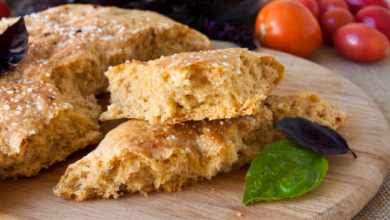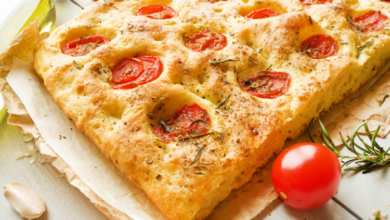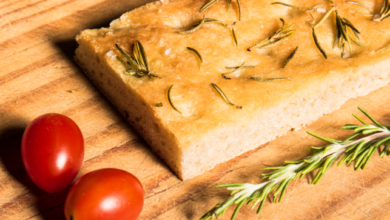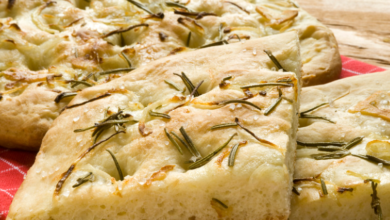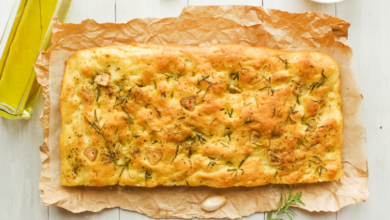Why Is My Focaccia Flat? Read On To Find Out Why
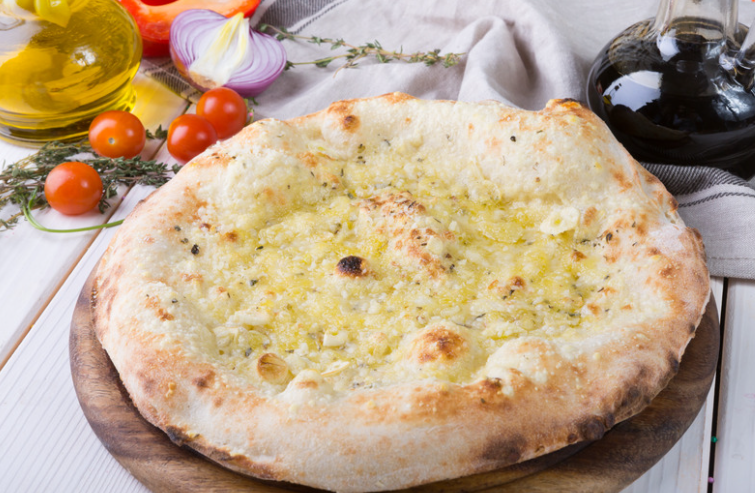
What To Know
- If the yeast is not active or there is not enough of it, the dough will not rise properly and the focaccia will be flat.
- A high hydration dough (70-80% water) will produce a softer and more open crumb, while a low hydration dough (60-65% water) will result in a denser focaccia.
- If the dough is not kneaded enough, the gluten network will not be strong enough to hold the gas bubbles, resulting in a flat focaccia.
Focaccia, the beloved Italian flatbread, is known for its airy crumb and crispy crust. However, sometimes, the dough can fall flat, leaving you with a dense and disappointing result. If you’ve ever wondered “why is my focaccia flat,” this blog post will delve into the potential causes and provide solutions to help you achieve the perfect focaccia every time.
The Importance of Yeast
Yeast is the key to a fluffy focaccia. When the yeast ferments the sugars in the dough, it produces carbon dioxide gas. This gas creates bubbles that expand and create the characteristic airy texture. If the yeast is not active or there is not enough of it, the dough will not rise properly and the focaccia will be flat.
Dough Hydration
The amount of water in the dough plays a crucial role in its texture. A high hydration dough (70-80% water) will produce a softer and more open crumb, while a low hydration dough (60-65% water) will result in a denser focaccia. If the dough is too dry, it will not be able to form the necessary bubbles.
Proofing Time
Proofing allows the yeast to ferment and the dough to rise. The ideal proofing time depends on the temperature and the amount of yeast used. If the dough is underproofed, it will not have enough time to develop flavor and the focaccia will be flat. Conversely, overproofing can lead to a sour taste and a weak structure.
Kneading Technique
Kneading the dough helps to develop the gluten network, which provides structure and elasticity. If the dough is not kneaded enough, the gluten network will not be strong enough to hold the gas bubbles, resulting in a flat focaccia. Overkneading, on the other hand, can make the dough tough.
Oven Temperature
The oven temperature is essential for creating the crispy crust and fluffy interior of focaccia. A high oven temperature (450-500°F) will quickly set the crust and create steam, which helps the dough to rise. If the oven is not hot enough, the focaccia will not brown properly and the crust will be soggy.
Baking Time
The baking time will vary depending on the size and thickness of the focaccia. A thin focaccia will bake faster than a thick one. It is important to keep an eye on the focaccia and remove it from the oven when it is golden brown and sounds hollow when tapped. Overbaking can dry out the focaccia.
Other Factors
In addition to the main factors discussed above, there are other factors that can contribute to a flat focaccia, such as:
- Old or inactive yeast: Make sure to use fresh, active yeast.
- Insufficient salt: Salt helps to strengthen the gluten network and control fermentation.
- Too much oil: Excess oil can weigh down the dough and prevent it from rising.
- Dense flour: Some flours, such as bread flour, have a higher protein content and can produce a denser focaccia.
Troubleshooting Tips
If your focaccia is flat, try the following troubleshooting tips:
- Use more yeast: If the dough is not rising, try adding more yeast.
- Increase dough hydration: Add more water to the dough to make it softer and more extensible.
- Proof the dough longer: Allow the dough to proof for longer to give the yeast more time to ferment.
- Knead the dough more: Knead the dough for longer to develop a stronger gluten network.
- Increase oven temperature: Preheat the oven to a higher temperature to create more steam and help the dough to rise.
- Bake the focaccia longer: Leave the focaccia in the oven for a few minutes longer to ensure that it is cooked through.
Final Thoughts: Mastering the Art of Focaccia
Achieving the perfect focaccia requires a combination of understanding the science behind the dough and practicing the art of baking. By paying attention to the factors discussed in this blog post, you can troubleshoot any issues and consistently create fluffy, flavorful focaccia that will delight your taste buds.
Popular Questions
Q: Why is my focaccia dense and gummy?
A: Your focaccia may be dense and gummy due to overproofing, overkneading, or using too much oil.
Q: Why does my focaccia have a sour taste?
A: Overproofing can lead to a sour taste in focaccia. Make sure to proof the dough for the correct amount of time.
Q: Why is the crust of my focaccia soggy?
A: A soggy crust can be caused by baking the focaccia at too low a temperature or not baking it long enough. Increase the oven temperature and bake the focaccia until the crust is golden brown.
Q: Can I use bread flour to make focaccia?
A: Bread flour has a higher protein content than all-purpose flour, which can result in a denser focaccia. It is best to use all-purpose flour for focaccia.
Q: How can I store focaccia?
A: Focaccia can be stored at room temperature for up to 3 days. To extend its shelf life, store it in an airtight container in the refrigerator for up to 5 days or in the freezer for up to 2 months.
